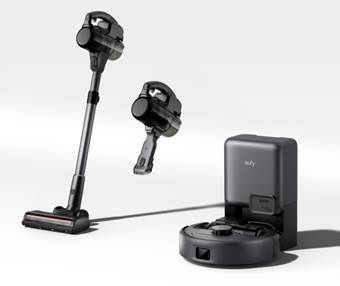Vacuum
cleaners are essential household tools, yet many buyers end up disappointed.
Studies show that nearly 70% of consumers regret their vacuum purchase because
they didn’t test it properly before buying. A weak suction, excessive noise, or
poor pet hair pickup can turn a promising machine into a frustrating waste of
money. Testing a vacuum before purchasing ensures it meets your specific
needs—whether you have thick carpets, hardwood floors, or shedding pets.
Skipping this step often leads to buyer’s remorse, extra costs, and another
trip to the store. In this article, we’ll guide you through a practical,
step-by-step testing process to help you make the best choice.

The Suction Power Test
Bring Test Materials (Rice, Flour, Pet Hair
Samples)
A
vacuum’s suction power determines how well it picks up dirt, but you can’t rely
on manufacturer claims alone. Instead, bring real-world test materials like
uncooked rice, flour, and pet hair to simulate everyday messes. Sprinkle these
on a hard floor and observe how efficiently the vacuum removes them. If it
struggles with rice or leaves flour behind, it may not handle deeper debris in
carpets. For pet owners, testing with actual pet hair is crucial. Some vacuums
claim strong suction but fail to pull embedded fur from upholstery or rugs. If
possible, collect hair samples from your own pets—different breeds shed
differently, and your vacuum should handle your specific situation.
Try Different Surface Types (Carpet vs. Hardwood)
A
great vacuum performs well on all surfaces. Start by testing on hardwood or
tile—these floors reveal how well the vacuum picks up fine dust without
scattering it. Then, switch to a carpeted area. Press debris slightly into the
carpet fibers to see if the suction can extract it. Pay attention to height
adjustments if the vacuum has them. A model that works poorly on thick carpet
but excels on hardwood might not be the best all-around choice. The ideal
vacuum should transition smoothly between surfaces without losing
efficiency.
Noise Level Evaluation
Bring a Decibel Meter App
Loud
vacuums can be disruptive, especially in small homes or apartments. To measure
noise accurately, use a free decibel meter app on your phone. Hold it at ear
level while the vacuum runs at its highest setting. Compare the reading to
everyday sounds—normal conversation is around 60dB, while vacuums often range
from 70dB to 85dB. If the vacuum exceeds 80dB, it may be too loud for frequent
use, particularly if you have noise-sensitive family members or pets.
Compare to Normal Conversation
A
vacuum’s noise level affects daily comfort. If it’s significantly louder than a
conversation, you might avoid using it as often as needed. Test it in an
enclosed space to simulate real home conditions—some models sound tolerable in
a large store but become overwhelming in smaller rooms. Additionally, listen
for high-pitched whines or grinding noises, which could indicate poor motor
quality. A smooth, consistent hum is preferable to erratic, jarring
sounds.
Maneuverability & Weight Check
A
lightweight vacuum may seem appealing, but stability matters just as much. Test
how easily it glides around furniture, under tables, and over thresholds.
Heavier models might offer stronger suction but become tiring to push after
prolonged use. Check the hose and
attachments—do they extend far enough to reach high corners or under sofas? A
stiff or tangled hose reduces efficiency. Also, test the cord length if it’s
not cordless. A short cord means frequent outlet changes, adding frustration to
cleaning sessions.

Pet Hair & Debris Test
Bring Actual Pet Hair from Home
Manufacturers’
"pet hair" tests don’t always match real-life conditions. Bring fur
samples from your own pets to see how well the vacuum handles them. Long-haired
breeds, in particular, can clog brush rolls if the vacuum lacks proper
anti-tangle features. Rub the hair into a carpet or couch fabric, then vacuum
it. Does the machine pick it up completely, or does some remain tangled in the
fibers? A good pet vacuum should prevent hair from wrapping around the brush
roll.
Check Brush Roll Anti-Tangle Design
Examine
the brush roll after picking up pet hair. Some vacuums have specialized combs
or grooves that prevent hair from winding tightly around the roller. If hair
clings stubbornly, cleaning the brush roll will become a frequent chore. Also,
test how easily the vacuum empties—does pet hair get stuck in the dustbin or
filter? A model that requires constant disassembly to remove trapped fur adds
unnecessary effort to your routine.
Filtration & Dust Containment
Allergy
sufferers need vacuums with strong filtration systems. Test whether the vacuum
releases dust back into the air when emptying. High-efficiency particulate air
(HEPA) filters trap microscopic particles, but cheaper models may let allergens
escape. If possible, vacuum fine dust or
flour, then observe if any particles puff out when you remove the dustbin. A
well-sealed system keeps allergens contained, improving indoor air quality.
Where & How to Test
Best Retail Stores for Testing
Large
appliance stores often have demo models available. Call ahead to confirm—some
stores may restrict testing due to hygiene policies. Home improvement stores
with dedicated cleaning sections are also good options. Electronics specialty
chains sometimes offer more hands-on demo areas than big-box retailers.
What to Ask Sales Staff
Ask
if they can provide test debris or if you can bring your own. Inquire about
return policies in case the vacuum doesn't perform well at home. A
knowledgeable salesperson can also highlight features you might overlook.
Specifically ask about the store's demonstration policy—some require staff
assistance while others allow self-testing.
Online Purchase Alternatives
If
testing in-store isn't possible, read detailed customer reviews focusing on
real-life performance. Look for reviewers with similar homes or cleaning needs.
Some online retailers offer extended return windows, allowing you to test the
vacuum at home. Pay special attention to video reviews that show the vacuum in
actual use rather than just written testimonials.
Conclusion
Testing
a vacuum before buying saves time, money, and frustration. Focus on suction
power, noise, maneuverability, and pet hair handling to ensure it meets your
needs. Investing 20 minutes in testing can prevent years of dissatisfaction.
For those considering deeper cleaning solutions, remember that steam mop vs regular mop debates often come down to sanitization needs. And if you’re
looking for reliable performance, brands like eufy offer high-quality cleaning
products with powerful features that tackle even the most stubborn messes
effortlessly. Choose wisely, and enjoy a cleaner home with the right tools!
